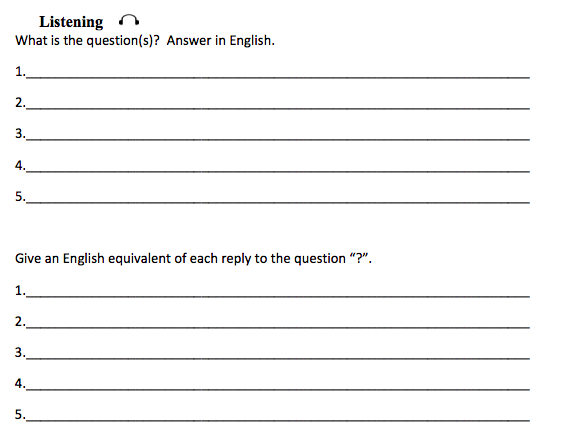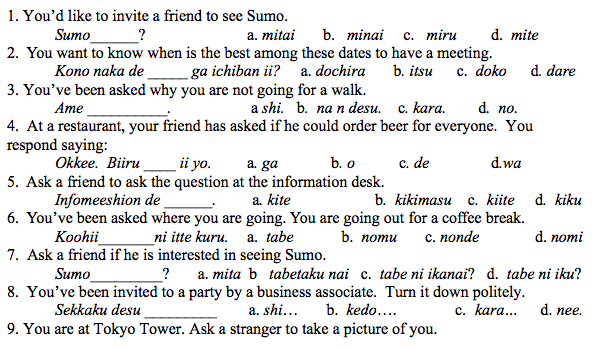Review
- Page ID
- 49260
\( \newcommand{\vecs}[1]{\overset { \scriptstyle \rightharpoonup} {\mathbf{#1}} } \)
\( \newcommand{\vecd}[1]{\overset{-\!-\!\rightharpoonup}{\vphantom{a}\smash {#1}}} \)
\( \newcommand{\dsum}{\displaystyle\sum\limits} \)
\( \newcommand{\dint}{\displaystyle\int\limits} \)
\( \newcommand{\dlim}{\displaystyle\lim\limits} \)
\( \newcommand{\id}{\mathrm{id}}\) \( \newcommand{\Span}{\mathrm{span}}\)
( \newcommand{\kernel}{\mathrm{null}\,}\) \( \newcommand{\range}{\mathrm{range}\,}\)
\( \newcommand{\RealPart}{\mathrm{Re}}\) \( \newcommand{\ImaginaryPart}{\mathrm{Im}}\)
\( \newcommand{\Argument}{\mathrm{Arg}}\) \( \newcommand{\norm}[1]{\| #1 \|}\)
\( \newcommand{\inner}[2]{\langle #1, #2 \rangle}\)
\( \newcommand{\Span}{\mathrm{span}}\)
\( \newcommand{\id}{\mathrm{id}}\)
\( \newcommand{\Span}{\mathrm{span}}\)
\( \newcommand{\kernel}{\mathrm{null}\,}\)
\( \newcommand{\range}{\mathrm{range}\,}\)
\( \newcommand{\RealPart}{\mathrm{Re}}\)
\( \newcommand{\ImaginaryPart}{\mathrm{Im}}\)
\( \newcommand{\Argument}{\mathrm{Arg}}\)
\( \newcommand{\norm}[1]{\| #1 \|}\)
\( \newcommand{\inner}[2]{\langle #1, #2 \rangle}\)
\( \newcommand{\Span}{\mathrm{span}}\) \( \newcommand{\AA}{\unicode[.8,0]{x212B}}\)
\( \newcommand{\vectorA}[1]{\vec{#1}} % arrow\)
\( \newcommand{\vectorAt}[1]{\vec{\text{#1}}} % arrow\)
\( \newcommand{\vectorB}[1]{\overset { \scriptstyle \rightharpoonup} {\mathbf{#1}} } \)
\( \newcommand{\vectorC}[1]{\textbf{#1}} \)
\( \newcommand{\vectorD}[1]{\overrightarrow{#1}} \)
\( \newcommand{\vectorDt}[1]{\overrightarrow{\text{#1}}} \)
\( \newcommand{\vectE}[1]{\overset{-\!-\!\rightharpoonup}{\vphantom{a}\smash{\mathbf {#1}}}} \)
\( \newcommand{\vecs}[1]{\overset { \scriptstyle \rightharpoonup} {\mathbf{#1}} } \)
\( \newcommand{\vecd}[1]{\overset{-\!-\!\rightharpoonup}{\vphantom{a}\smash {#1}}} \)
\(\newcommand{\avec}{\mathbf a}\) \(\newcommand{\bvec}{\mathbf b}\) \(\newcommand{\cvec}{\mathbf c}\) \(\newcommand{\dvec}{\mathbf d}\) \(\newcommand{\dtil}{\widetilde{\mathbf d}}\) \(\newcommand{\evec}{\mathbf e}\) \(\newcommand{\fvec}{\mathbf f}\) \(\newcommand{\nvec}{\mathbf n}\) \(\newcommand{\pvec}{\mathbf p}\) \(\newcommand{\qvec}{\mathbf q}\) \(\newcommand{\svec}{\mathbf s}\) \(\newcommand{\tvec}{\mathbf t}\) \(\newcommand{\uvec}{\mathbf u}\) \(\newcommand{\vvec}{\mathbf v}\) \(\newcommand{\wvec}{\mathbf w}\) \(\newcommand{\xvec}{\mathbf x}\) \(\newcommand{\yvec}{\mathbf y}\) \(\newcommand{\zvec}{\mathbf z}\) \(\newcommand{\rvec}{\mathbf r}\) \(\newcommand{\mvec}{\mathbf m}\) \(\newcommand{\zerovec}{\mathbf 0}\) \(\newcommand{\onevec}{\mathbf 1}\) \(\newcommand{\real}{\mathbb R}\) \(\newcommand{\twovec}[2]{\left[\begin{array}{r}#1 \\ #2 \end{array}\right]}\) \(\newcommand{\ctwovec}[2]{\left[\begin{array}{c}#1 \\ #2 \end{array}\right]}\) \(\newcommand{\threevec}[3]{\left[\begin{array}{r}#1 \\ #2 \\ #3 \end{array}\right]}\) \(\newcommand{\cthreevec}[3]{\left[\begin{array}{c}#1 \\ #2 \\ #3 \end{array}\right]}\) \(\newcommand{\fourvec}[4]{\left[\begin{array}{r}#1 \\ #2 \\ #3 \\ #4 \end{array}\right]}\) \(\newcommand{\cfourvec}[4]{\left[\begin{array}{c}#1 \\ #2 \\ #3 \\ #4 \end{array}\right]}\) \(\newcommand{\fivevec}[5]{\left[\begin{array}{r}#1 \\ #2 \\ #3 \\ #4 \\ #5 \\ \end{array}\right]}\) \(\newcommand{\cfivevec}[5]{\left[\begin{array}{c}#1 \\ #2 \\ #3 \\ #4 \\ #5 \\ \end{array}\right]}\) \(\newcommand{\mattwo}[4]{\left[\begin{array}{rr}#1 \amp #2 \\ #3 \amp #4 \\ \end{array}\right]}\) \(\newcommand{\laspan}[1]{\text{Span}\{#1\}}\) \(\newcommand{\bcal}{\cal B}\) \(\newcommand{\ccal}{\cal C}\) \(\newcommand{\scal}{\cal S}\) \(\newcommand{\wcal}{\cal W}\) \(\newcommand{\ecal}{\cal E}\) \(\newcommand{\coords}[2]{\left\{#1\right\}_{#2}}\) \(\newcommand{\gray}[1]{\color{gray}{#1}}\) \(\newcommand{\lgray}[1]{\color{lightgray}{#1}}\) \(\newcommand{\rank}{\operatorname{rank}}\) \(\newcommand{\row}{\text{Row}}\) \(\newcommand{\col}{\text{Col}}\) \(\renewcommand{\row}{\text{Row}}\) \(\newcommand{\nul}{\text{Nul}}\) \(\newcommand{\var}{\text{Var}}\) \(\newcommand{\corr}{\text{corr}}\) \(\newcommand{\len}[1]{\left|#1\right|}\) \(\newcommand{\bbar}{\overline{\bvec}}\) \(\newcommand{\bhat}{\widehat{\bvec}}\) \(\newcommand{\bperp}{\bvec^\perp}\) \(\newcommand{\xhat}{\widehat{\xvec}}\) \(\newcommand{\vhat}{\widehat{\vvec}}\) \(\newcommand{\uhat}{\widehat{\uvec}}\) \(\newcommand{\what}{\widehat{\wvec}}\) \(\newcommand{\Sighat}{\widehat{\Sigma}}\) \(\newcommand{\lt}{<}\) \(\newcommand{\gt}{>}\) \(\newcommand{\amp}{&}\) \(\definecolor{fillinmathshade}{gray}{0.9}\)Grammar Review
1. What four groups are Japanese verbs divided into?
2. Describe how to make the non-past affirmative plain verb form from the ~masu form.
3. Describe how to make the non-past negative plain verb form from the plain affirmative form.
4. Is it possible to tell which group a verb belongs by its ~masu form? By its plain form?
5. What does the pattern /plain form + n desu/ mean?
6. What is the difference in meaning between the following?
Takai desu.
Takai n desu.
7. What is the difference between the following?
Kaeru n desu.
Kaeru no.
8. What happens to the noun sentence when /n desu/ is attached?
9. Explain the difference in meaning among the following.
Isogashii desu kara.
Isogashii n desu.
Isogashii shi.
10. We have covered three kinds of particle ni so far: Location, Goal, and Purpose. Give an example of each.
11. What kind of verbs follow the purpose expressions with the particle ni?
12. What two kinds of elements occur before the purpose particle ni?
13. What is the difference between the following?
Tanoshii deshou.
Tanoshii darou.
14. What does X yori mean?
15. What does X no hou mean?
16. How do you list two items you are comparing? More than three items?
17. What is the difference in meaning between the following?
Koohii ga ii desu.
Koohii de ii desu.
Sample Homework/Quiz

Grammar
A. Read each context and circle the item that best fits the blank.


B. Circle the letter of the most appropriate item in the given context.
1. You’ve been asked which you like better, movies or sport.
a. Eiga yori suki desu. b. Eiga wa motto suki desu.
c. Eiga ga ichiban suki desu. d. Eiga no hou ga suki desu
2. A friend is getting ready to leave. Check your assumption that she is going home.
a. Kaeru n desu ka? b Kaeru no? c. Kaeranai no? d. Kaerimasu ka?
3. You’d like to ask a friend a question. How do you get her attention?
a. Sumimasen. b. Anoo. c. Hora? d. Nee..
C. Fill in the chart in Romanization or Hiragana.

D. Answer in English.
1. Describe an example of situations where you might say ‘Isogashii n desu’ rather than ‘Isogashii desu.’
2. Describe a situation where the informal form of a honorific verb such as ‘irassahru’ is typically used.
Drill Tape Scripts
Dialogue 1 Dialogue 1
A. Cue: 相撲、見たくない? Response: あ、見たい。
Cue: すし、食べたくない? Response: あ、食べたい。
1. この漫画、読みたくない?
2. 温泉、行きたくない?
3. ビール、飲みたくない?
4. 新しい新幹線、乗りたくない?
5. 仕事、休みたくない。
B. Cue: すし、食べますか? Response:うん、食べる.
Cue: 勉強、しますか? Response: うん、する。
1. スマホ、使いますか。
2. 英語、話しますか。
3. 駅まで行きますか。
4. 毎日、来ますか。
5. 日本人の友だち、いますか。
Dialogue 2
A. Cue: 行きますよ。 Response: え、行くの?
Cue: 雨ですよ。 Response: え、雨なの?
1. ファイル、いりますよ。
2. 日本人ですよ.
3. 地下鉄に、乗り換えますよ.
4. 相撲、みたいです。
5. 先輩がいらっしゃいますよ。
* Repeat this drill, replacing no with n desu.
B. Cue: 行きますか? Response: 行くだろうねえ。
Cue: 楽しいですか? Response: 楽しいだろうねえ。
1. あの映画、面白いですか。
2. 明日、雪ですか。
3. 電車、遅れますか。
4. 試験、難しかったですか。
5. アメリカに帰りますか。
Dialogue 3
A. Cue: 野球と相撲とどっちの方がいい? Response: 野球より、相撲のほうがいい。
Cue: うどんとラーメンとどっちの方が食べたい?Response:うどんよりラーメンの方がたべた
い。
1. 新幹線と飛行機とどっちの方が早い。
2. 今月と来月とどっちの方が忙しい。
3. アジアの文化とヨーロッパの文化と
どっちの方が好き。
4. 勉強とバイトとどっちの方が大変。
5. 日本人の友だちとアメリカ人の友だ
ちとどっちの方が多い。
B. Cue: 伝統的ですね。Response: ええ、伝統的だし、大好きです。
Cue: 安いですね。Response: ええ、安いし、大好きです。
1. かわいいですね。
2. 古い文化ですね。
3. むずかしくないですね。
4. よくがんばりますね。
Dialogue 4
A. Cue: 相撲、 見る。Response: いや、見ない。
Cue: 焼き肉、食べる。Response: いや、食べない。
1. 写真撮る。
2. 野球する。
3. ビール飲む。
4. お金払う。
5. 明日も来る。
B. Cue: 焼き肉でいい? Response: というか、焼き肉の方がいいよ。
Cue: 割り勘でいい? Response: というか、割り勘の方がいいよ。
1. お弁当でいい?
2. このアパートでいい?
3. 来週の週末でいい?
4. PDF のファイルでいい?
5. 鉛筆でいい?

